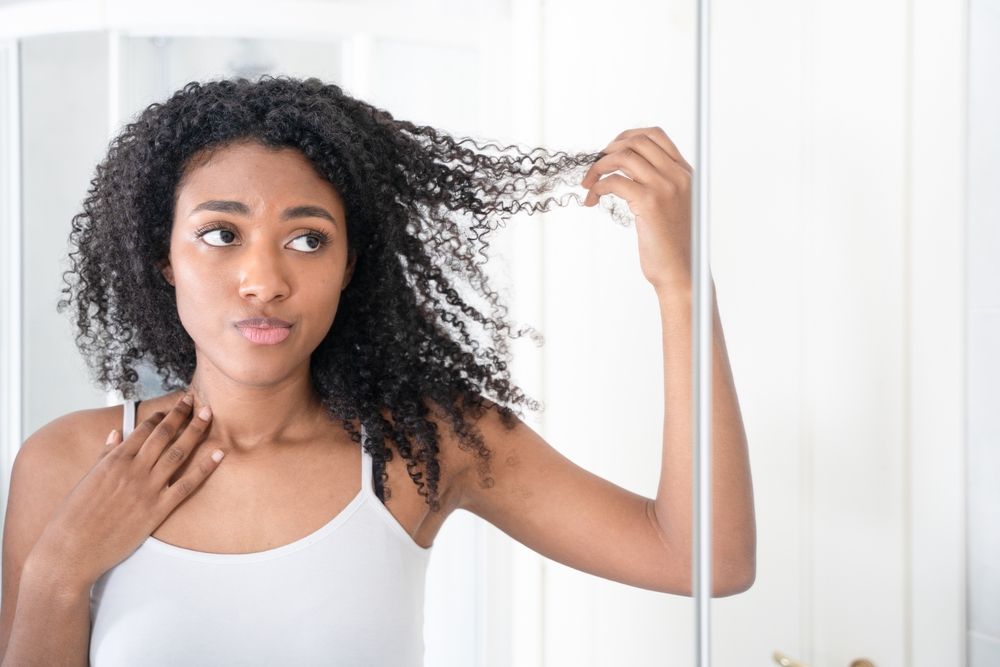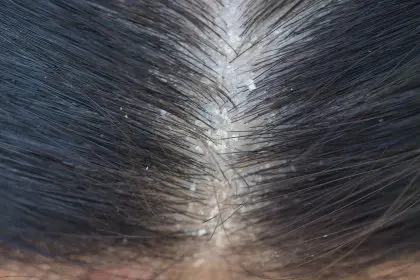That moment when you notice more hair circling your shower drain than usual. The subtle thinning at your temples that catches you off guard in photos. The increasingly visible scalp that greets you in the mirror each morning. Hair loss happens to most of us at some point, and the $3.9 billion hair growth industry is built on that universal anxiety. But before you empty your wallet on fancy serums with unpronounceable ingredients, there’s something your ancestors knew that might save both your hair and your bank account.
Herbs for hair growth aren’t just some new wellness trend. They’ve been used across cultures for thousands of years, long before modern hair treatments existed. While no plant can magically transform a bald spot into a luscious mane overnight, certain herbs contain compounds that genuinely support the biological processes behind healthy hair growth. Let’s explore the most powerful botanical allies for your struggling strands.
The scalp circulation boosters
Hair follicles need proper blood flow to thrive. Without adequate circulation delivering nutrients and oxygen, even the healthiest follicles struggle to produce strong hair. These herbs specialize in getting blood flowing to those hungry hair roots.
If you only try one herb for hair growth, make it rosemary. This common kitchen herb contains rosmarinic acid and carnosic acid, compounds that increase blood circulation to the scalp. Multiple head-to-head comparisons have found that rosemary oil performs similarly to minoxidil for androgenetic alopecia but without the scalp irritation that drives many people to quit using the commercial product.
The simplest approach is massaging rosemary oil directly into your scalp two to three times weekly, leaving it on for at least 30 minutes before washing. For an even more potent option, make rosemary-infused oil at home by steeping rosemary sprigs in olive or coconut oil for two weeks, then strain and apply.
That pleasant heat you feel when eating ginger comes from gingerols and shogaols, compounds that stimulate circulation wherever they’re applied. For hair growth, this increased blood flow delivers more nutrients to starving follicles.
Create a simple ginger treatment by blending fresh ginger root with a carrier oil like jojoba until smooth. Apply this mixture to your scalp, focusing on thinning areas. The slight tingling sensation means it’s working. Leave it on for 30 minutes before shampooing. Use this treatment once weekly to avoid potential irritation from overuse.
The hormone balancers
For many people, hair loss stems from hormonal imbalances. Excess DHT, a testosterone byproduct, shrinks hair follicles until they stop producing visible hair. These herbs help regulate the hormonal factors behind thinning hair.
Native Americans used saw palmetto berries for centuries before scientists discovered their ability to block 5-alpha-reductase, the enzyme that converts testosterone to follicle-shrinking DHT. This makes saw palmetto particularly helpful for pattern baldness in both men and women.
While saw palmetto supplements work systemically, topical application targets the scalp directly. Look for hair products containing saw palmetto extract or add saw palmetto tincture to your shampoo. For maximum benefit, combine both approaches. Just be aware that saw palmetto can affect hormone levels, so pregnant women and those on hormone medications should consult healthcare providers first.
Pumpkin seeds are packed with zinc, magnesium, and phytosterols that regulate hormone production and block DHT without side effects. One study found that men taking pumpkin seed oil supplements saw a 40% increase in hair count after 24 weeks compared to just 10% in the placebo group.
While supplements work well, you can also harness pumpkin power topically. Grind raw pumpkin seeds into a fine powder and mix with yogurt to create a mask. Apply to your scalp weekly, leaving it on for 20 minutes before rinsing. The zinc and oils absorb directly into follicles, providing nutritional support where it’s needed most.
The inflammation fighters
Chronic scalp inflammation is like kryptonite to healthy hair growth. It disrupts the normal growth cycle and can eventually lead to permanent follicle damage. These herbs calm angry scalps and create an environment where hair can thrive.
Aloe contains over 75 active compounds with anti-inflammatory, antimicrobial, and cell-regenerating properties. It soothes irritated scalps, removes excess sebum that clogs follicles, and delivers moisture without heaviness.
The purest application comes straight from the plant. Split an aloe leaf and scoop out the gel, applying it directly to your scalp. Leave it on for an hour before shampooing. Used three times weekly, this simple treatment reduces inflammation while balancing scalp pH. If fresh aloe isn’t available, look for products containing high concentrations of pure aloe without alcohol, which can dry the scalp.
Beyond its relaxing scent, lavender contains powerful anti-inflammatory and antimicrobial compounds that address multiple causes of hair loss simultaneously. It calms inflamed follicles while fighting fungal overgrowth that might be impeding growth.
Create a weekly scalp treatment by adding 10-15 drops of lavender essential oil to two tablespoons of a carrier oil like argan or grapeseed. Massage into your scalp and cover with a shower cap for enhanced absorption. The gentle anti-inflammatory action works without stripping natural oils or disrupting scalp balance.
The nutrient-dense growth supporters
Hair is made of protein and requires specific nutrients to grow strong and healthy. These herbs deliver concentrated doses of those hair-building elements directly to your follicles.
One of the richest plant sources of silica, horsetail strengthens hair from the inside out. Silica improves elasticity and prevents breakage while supporting collagen production for a healthier scalp environment.
Make horsetail tea by steeping dried herb in hot water for 15 minutes, then cool completely. After shampooing, pour this tea over your hair as a final rinse, not rinsing afterward. Over time, the accumulated silica creates visibly stronger strands less prone to breakage. This herb works gradually, with results becoming noticeable after consistent use for at least two months.
Despite its stinging reputation, nettle delivers an unmatched combination of iron, silica, sulfur, and vitamins essential for hair growth. It also contains compounds that block DHT while stimulating dormant follicles back into the growth phase.
The safest way to use nettle is through pre-made extracts in hair products or by drinking nettle tea daily. For direct application, only use pre-made nettle products to avoid the sting of fresh plants. A weekly nettle rinse after shampooing delivers minerals directly to your scalp without requiring special preparation.
Creating your herbal hair growth routine
While each herb offers unique benefits, combining them strategically amplifies their effectiveness. Start with addressing your primary concern. Is it inflammation? Hormonal imbalance? Poor circulation? Choose one herb from the appropriate category and use it consistently for at least one month before evaluating results.
Remember that healthy hair grows only about half an inch monthly, so visible results require patience. Take monthly photos in the same lighting to track subtle improvements that might otherwise go unnoticed. Once you find herbs that work for your specific needs, rotation often yields better results than using the same treatment indefinitely.
The beauty of herbal hair remedies lies in their gentle, cumulative action. Unlike harsh chemicals that might deliver dramatic short-term results at the cost of long-term scalp health, herbs support your body’s natural hair growth processes. They work with your biology rather than forcing unnatural responses, creating sustainable improvement rather than quick fixes that ultimately fail.
Your healthiest hair awaits, rooted not in expensive bottles but in the natural world our ancestors trusted for generations.














